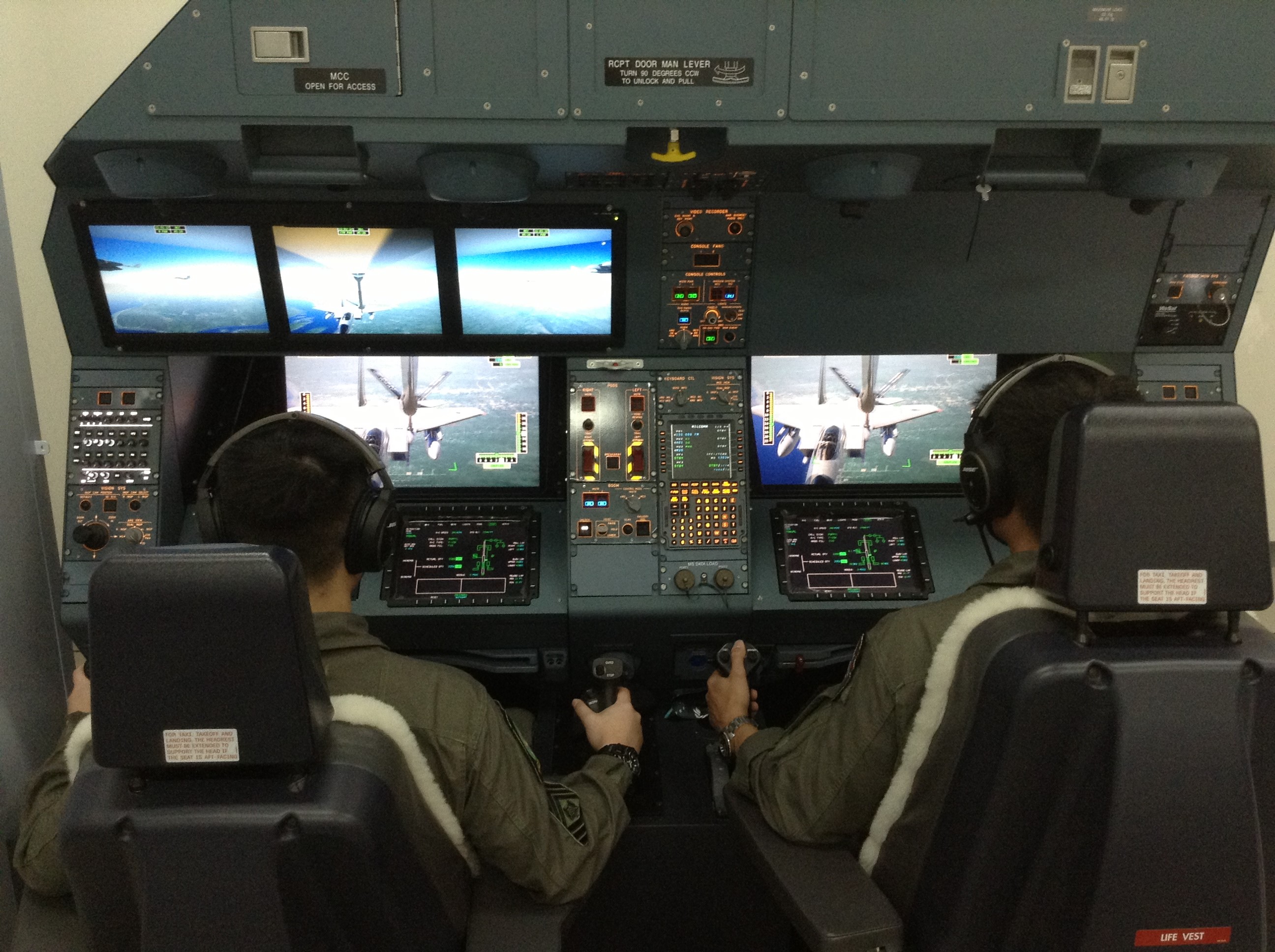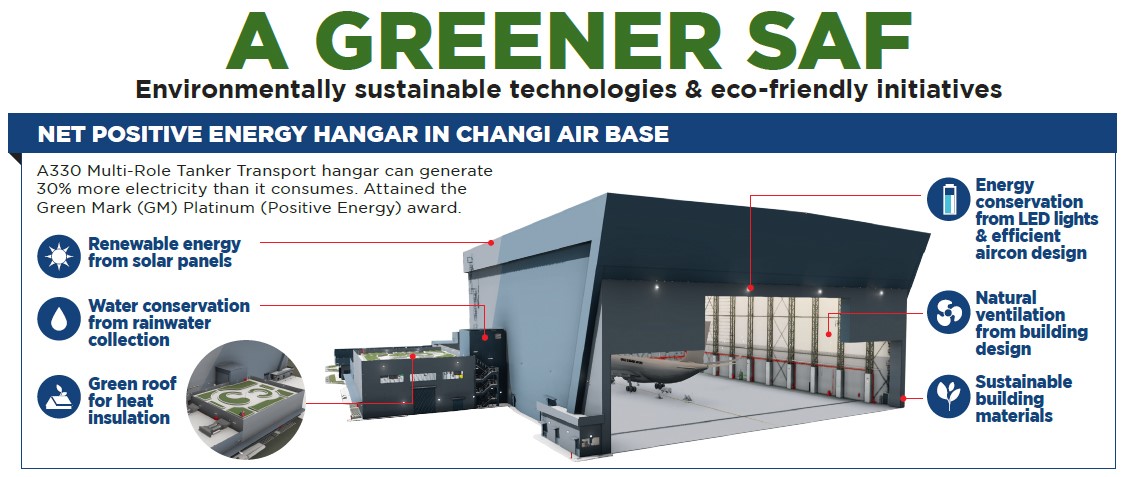 Fact Sheet: RSAF A330 Multi-Role Tanker Transport
Fact Sheet: RSAF A330 Multi-Role Tanker Transport
Background
The Republic of Singapore Air Force (RSAF) A330 Multi-Role Tanker Transport (A330 MRTT) is a next-generation tanker aircraft capable of conducting Air-to-Air Refuelling (AAR) and airlift roles simultaneously. Apart from the advanced avionics and fly-by-wire control systems featured in the A330 commercial aircraft, the RSAF's A330 MRTT is also equipped with a customised suite of military avionics. The A330 MRTT has better endurance, cargo and passenger capacity, and provides more fuel to other aircraft compared to the KC-135R aerial tankers. Its enhanced AAR capabilities extends the endurance of fighter aircraft, and enables the RSAF to be more effective and capable in meeting operational demands. The A330 MRTT provides the RSAF with greater operational flexibility and enhances the Singapore Armed Forces (SAF)'s ability to contribute to international Humanitarian Assistance and Disaster Relief (HADR) missions, and Peace Support Operations (PSO).

The RSAF A330 MRTT aircraft conducting air-to-air refuelling operations with an MRTT aircraft (left) and the F-15SG fighter jet (right).
Air-to-Air Refuelling Capabilities
The A330 MRTT can carry 245,000 lbs (111,000 kg) of fuel. It can conduct refuelling operations on drogue-refuelled and boom-refuelled platforms, enhancing the RSAF's interoperability with other air forces. The A330 MRTT is equipped with the Universal Aerial Refuelling Receptacle Slipway Installation and can receive fuel from another tanker aircraft, increasing the endurance of the A330 MRTT during extended operations.
The air refuelling systems are controlled from the operator's console located in the flight deck, facilitating pilot and operator coordination. The Aerial Refuelling Boom System (ARBS) is operated by fly-by-wire controls, electrical actuators, and a 3-Dimensional (3D) video system. The 3D video system provides a clear and realistic visual of AAR operations. Air Refuelling Operators (AROs) train for AAR operations on a simulator. The AAR simulator replicates the operator's console, and is also equipped with flight management and aerial refuelling system panels for instrument familiarisation. Capable of simulating a wide range of operational scenarios, the simulator allows AAR training to be conducted under all-weather as well as day and night conditions.

Air Refuelling Operators training on the MRTT Air-to-Air Refuelling simulator at Changi Air Base (East).
Through a workload cognitive study conducted together with the Defence Science and Technology Agency (DSTA) to streamline workflow processes and optimise resources, the RSAF has successfully reduced the A330 MRTT operating crew size from four to three personnel1. The reduction in crew size enables the RSAF to optimise manpower resources and lower operational life cycle costs. It also creates the flexibility to scale up operational crew depending on mission complexity and optimise resources as required. The successful reduction of crew size has paved the way for A330 MRTT operators around the world to adopt the three personnel crew as a standard operating feature. These standardised roles also facilitate cross-learning amongst global A330 MRTT operators.
Aeromedical Evacuation Capability
The RSAF's A330 MRTT can be configured to support various aeromedical evacuation (AME) missions. Its aeromedical evacuation capability allows the SAF to deploy medical forces overseas to ensure that SAF personnel have access to quality healthcare and medical support, even when operating in austere environments. The RSAF's A330 MRTT can also be deployed to support HADR and PSO missions.
The A330 MRTT can be configured to provide care for up to three Intensive Care Unit2 (ICU)-level patients, or for twelve others requiring light to moderate care. The RSAF's A330 MRTT is also capable of the safe transfer of patients with infectious diseases3 through the use of the Negative Pressure Individual Isolation Systems. Patients will be attended to by a specialised and highly trained in-flight RSAF medical team who will monitor and manage their medical conditions closely throughout the flight.

RSAF medical personnel setting up for an aeromedical evacuation mission.
A330 MRTT Green Hangar – Net Positive Energy Aircraft Hangar
In line with the Singapore Green Plan 2030, the Ministry of Defence (MINDEF) and the SAF are doing our part to be environmentally sustainable. Completed in March 2020, the A330 MRTT aircraft hangar is the SAF's first net positive energy building. The hangar is able to generate 30 per cent more electricity than it consumes, and attained the Green Mark Platinum (Positive Energy) award in 2020. Additional electricity generated from the solar panels will be used to supplement other energy demands within Changi Air Base (East).

The RSAF's MRTT Green Hangar is equipped with environmentally sustainable technologies and eco-friendly initiatives.
1 The crew comprises the pilot, co-pilot and an ARO.
2 Including patients who are intubated or mechanically ventilated.
3 Including infectious diseases such as Severe Acute Respiratory Syndrome (SARS), Influenza A H1N1 and Ebola virus. The RSAF medical team will don full Personal Protection Equipment when attending to patients with infectious diseases.
